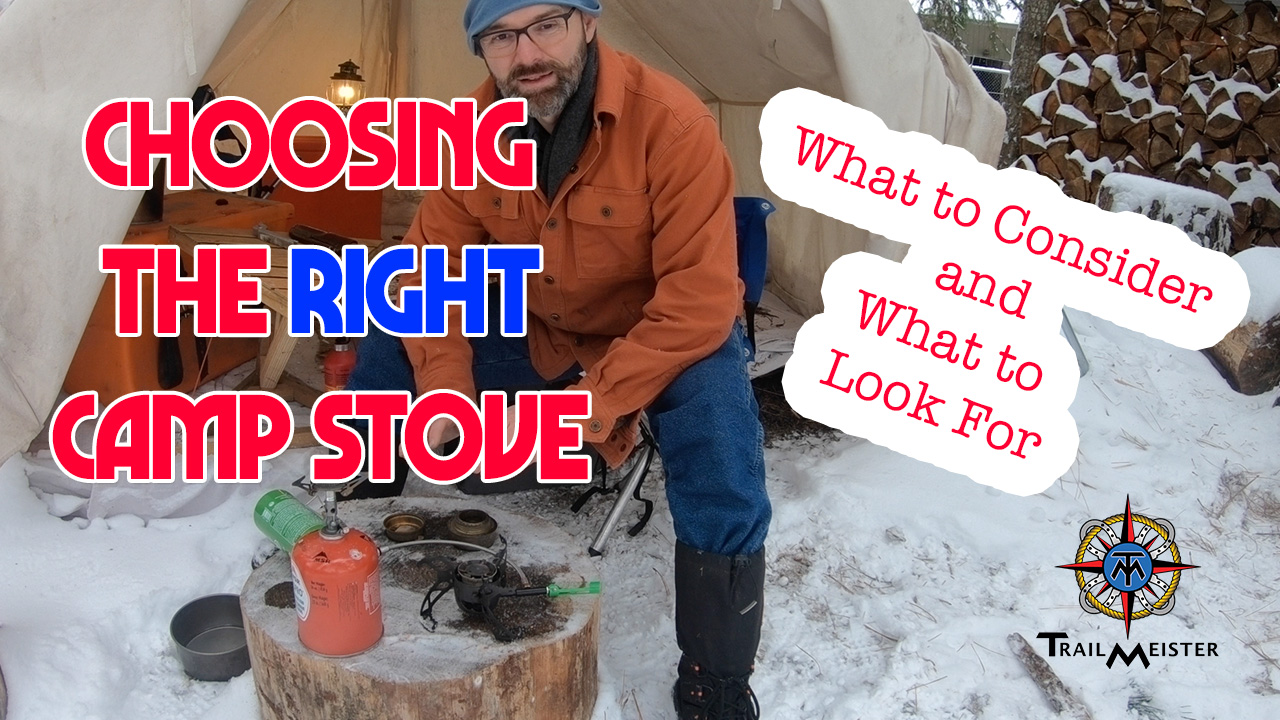What Type of Camp Stove?
A stove is one the most important items you’ll carry when camping, not least because making tea, and coffee, as well as cooking meals are rituals for every day in the wilderness. Let’s into what to consider and what to look for in camp stoves.
After a few decades of horse camping I’ve managed to collect a few stoves. It’s nice to be able to pick and choose but at the end of the day I generally only take one on a trip.
Choosing a stove can seem a bewildering challenge given the number of options. That said, as with any piece of gear, the process of selecting the best stove for your needs becomes fairly straightforward if you hash out a few basic details.
The way I figure it there are only 4 types of stoves: Canister stoves – Liquid fuel stoves – Alcohol Stoves – Wood stoves.
Let’s look at canister stoves first
CANISTER STOVES:
They’re light, compact, easy to use, and fast. With canister stoves there’s no priming, pumping, or maintenance of any kind.
Just screw in your stove and light it up for a quick meal.
On the other hand, the fuel for canister stoves is more expensive, they don’t work well in the cold (usually below 20°F), they’re prone to be tippy, and most canisters aren’t reusable making them an ecological nightmare.
Canister Stove Summary
PROS
- Light & compact
- Rapid boil times
- Easy to use
- Clean burn – no pot residue
CONS
- More expensive fuel
- Not as good as liquid fuel stoves in cold
- Can be tippy
- May be hard to find a recycling center that accepts the empties
I used to use canister stoves but have since shifted to liquid fuel stoves, mostly because of their instability and difficulty in recycling.
Canister Stove – SOTO – https://amzn.to/3bfCBVP
LIQUID FUEL STOVES:
If you’re planning to do a lot of cooking, and I am, liquid fuel stoves I think are your best bet. From my ancient Colemen two burner to newer high tech models, white gas stoves have a place in my kit.
Liquid fuel stoves work well in below-freezing conditions and their fuel (white gas) is MUCH cheaper than canister stove fuel. Some liquid fuel stoves can even be used with different fuel types (like kerosene, unleaded, and even diesel fuel). Most liquid fuel stoves offer stable bases and of course the more cost effective fuel.
Liquid Fuel Stove Summary
PROS
- Fuel is less expensive
- Fuel bottles are refillable & easier to gauge usage
- Good for extreme cold
CONS
- Heavier & bulkier than some others
- More complicated to use – priming required
- Some can be noisy
The NOVA Optimus is the camp stove that accompanies me on the vast majority of my back country trips now.
If noise is an issue then this may be the cure.
Liquid Fuel Stove – OPTIMUS NOVA – https://amzn.to/2NctBsA
ALCOHOL STOVES:
Alcohol stoves are very light and simple and denatured alcohol is easy to find.
The main downsides with alcohol stoves are the slow cook times, poor performance in the cold, and less efficient fuel.
Cooking times for alcohol stoves can be decreased with a system like this Trangia setup which helps block the wind and holds heat against your pots to increase efficiency. But even with a good windscreen, cooking with an alcohol stove will require more patience.
Be careful when using alcohol stoves because their fuel burns clean blue and can be very hard to see. Always make sure your stove has fully burned out before handling it or attempting to re-fuel.
Additionally most alcohol stoves aren’t permitted for use during fire bans.
Alcohol Stove Summary:
PROS
- Light & compact
- Inexpensive
- Easy to make your own
- Easy to find fuel
- Very quiet
CONS
- Slow cooking times
- Less efficient fuel
- Poor performance in wind
- Poor temperature control
- Can be dangerous – hard to see flame, easy to spill fuel
- Can’t use during most fire bans
Alcohol Stove – TRANGIA – https://amzn.to/3axHta1
WOOD STOVES:
Wood stoves are a popular option among people that like doing things the old-fashioned way. Using a wood camp stove is very similar to cooking over a campfire, but quicker and more efficient.
With a wood stove you won’t have to carry any fuel, you’ll be able to cook longer, you’ll be burning a renewable resource, and you’ll get to enjoy the comforts of a fire nearly every night.
Wood stoves do have some significant downsides. They require more time and effort than most backpacking stoves, which can be frustrating when you’re tired and hungry after a long day of riding. It can also be tough to find good fuel on rainy trips.
And lastly, wood stoves can’t be used during most fire bans.
Wood Stove Summary:
PROS
- Minimal fuel weight
- Minimal fuel cost
- Renewable fuel resource
- Nostalgic & pleasant
CONS
- More time, effort & practice required
- Slower cook times
- Usually heavier
- Can’t use during most fire bans
Wood Stove – KNI-CO – https://www.kni-co.com
I hope that this helps you to choose a camp stove that works best for your style of camping.
For more practical information on trail riding and horse camping, as well as the world’s largest guide to horse trails and camps give us a visit at www.TrailMeister.com


